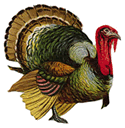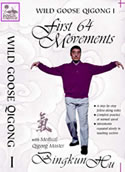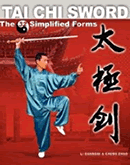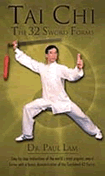Gentle Exercise, Breathing, and Meditation
Scientific Research Many Reports on the Effect of Qigong on Improving the Health of the Elderly
"Qigong can do wonders to rejuvenate the elderly. In fact, more than 50 percent of the people who begin tai chi and qigong in China do so after the age of 60, when the realities of aging can no longer be pushed aside. Already, hundreds of millions of people over the age of 60 have found qigong to be uniquely effective."
- Bruce Frantzis, Qigong for Seniors
Anti-Aging Benefits of Qigong by Kenneth Sancier, Ph.D.
Qigong for the Elderly
"This report shows that regular qigong practice could relieve depression, improve self-efficacy and personal well being among elderly persons with chronic physical illness and depression"
- Effect of a Qigong Program on Elderly Persons with Depression, International Journal of Geriatric Psychiatry.
Qigong (Chi Kung): Styles,Bibliographies, Research, Resources, Links, Lessons, Benefits, Quotations. Website by Mike Garofalo.
A review of clinical trials of t’ai chi and qigong in older adults reported in the March 2009 issue of the Western Journal of Nursing Research notes that qigong improves physical functioning, limits fall risk, alleviates symptoms of depression and anxiety, and lowers blood pressure in older adults.
"Why Every Elderly Citizen Should Do Qigong: Qigong can treat many diseases. Qigong can prevent many diseases. Qigong can extend life. Qigong can improve the quality of life. Qigong can prevent accidents."
"According to T'ai Chi and Qigong enthusiasts, the discipline can prevent many ailments, including high blood pressure, tuberculosis, and diabetes, and US scientists agree that T'ai Chi can offer some important fitness benefits, particularly for older adults."
- Modern Maturity, V. 35 June/July 92 p. 60-62
Qigong (Chi Kung): Recommended Reading, Bibliography, Resources, Links, Quotations. Research by Mike Garofalo, Qigong Instructor
"The average person uses only five to ten percent of his or her 15 billion brain cells; yet studies show that Qi Gong activates 90 percent of the human brain by suffusing it with stimulating bioelectric currents. This results in significant memory improvement, learning, and enhancement of the physiological functions controlled by the brain. Studies also show that practicing Qi Gong increases the level of essential neurotransmitters in the blood. Deficiency of these elements can cause Parkinsons, Alzheimer’s, chronic depression, and insomnia."
- Lee Holden
According to the February 2009 issue of The Journal of Nursing, “evidence-based research supports the argument that qigong improves cardiovascular-respiratory function and lipid profile, decreases blood sugar, and relieves anxiety and depression.”
An Evidence-Based Review of Qi Gong by the Natural Standard Research Collaboration, 2010
The Healing Promise of Qi: Creating Extraordinary Wellness Through Qigong and Tai Chi. By Roger Jahnke, O.M.D.. Chicago, Contemporary Books, 2002. Index, notes, extensive recommended reading list, 316 pages. ISBN: 0809295288. VSCL.
The Way of Qigong: The Art and Science of Chinese Energy Healing. By Kenneth S. Cohen. Foreword by Larry Dossey. New York Ballantine Books, 1997. Index, notes, appendices, 427 pages. ISBN: 0345421094. One of my favorite books: comprehensive, informative, practical, and scientific. VSCL.




















